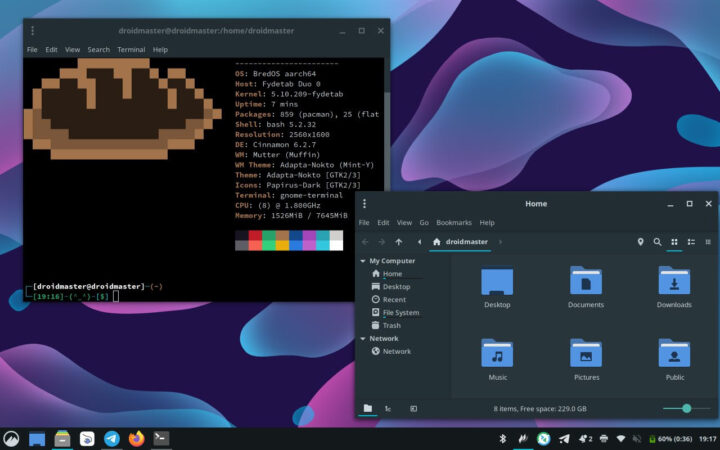BredOS is a Linux distribution based on Arch Linux Arm and optimized to run on Rockchip RK3588/RK3588S single board computers (SBCs) with current support for 22 boards from Radxa, Orange Pi, Khadas, and others.
Board vendors will usually provide OS images for their SBCs, but the quality and support may be limited, so projects like Armbian and DietPi are maintaining Ubuntu and/or Debian images for popular single board computers. But if you’re an Arch Linux (Arm) fan, there are fewer choices, and you may have to roll your own port for your board. BredOS provides an easy-to-use alternative based on Arch Arm Linux.
BredOS highlights (provided by the developers):
- User-Friendly Interface – A simplified and intuitive user interface for easy navigation and use.
- Arch-Based – Built on top of Arch Linux, ensuring access to a vast repository of packages and a rolling release model.
- Arm Support – Optimized for Arm-based single board computers, making it ideal for devices like the Rock 5B, and more.
- Lightweight – Minimal bloat, ensuring a lightweight and responsive system.
“Lightweight” here is relative because minimal hardware requirements are still 2GB of RAM and a 16GB microSD card.
As mentioned in the introduction, twenty-two “single board computers” are currently supported by the BredOS Arch Linux Arm distribution:
- Radxa Rock 5A, 5B, 5B+, 5C, 5D
- Radxa Rock 4C+ (Rockchip RK3399)
- Radxa NX5 Kit
- IndieDroid Nova and Cool Pi 4B (same design with different names)
- Orange Pi 5/5B/5B+
- Khadas Edge 2
- Khadas VIM 4 (Amlogic A311D2)
- Fydetab Duo Linux tablet based on Rockchip RK3588S SoC
- Several Mekotronics RK58 embedded mini PCs
While most supported platforms above are based on Rockchip RK3588(S), the Khadas VIM4 is based on Amlogic A311D2, so BredOS is not only made for Rockchip targets.
DroidMaster has uploaded a video on YouTube showing BredOS running on the Fydetab Duo tablet.
You’ll find an installation guide and other information on the documentation website, while Linux 6.1.75 source code, pre-built OS images, and tools are available on GitHub. You may want to check information for your board as there are still some known issues.
Via Ameridroid

Jean-Luc started CNX Software in 2010 as a part-time endeavor, before quitting his job as a software engineering manager, and starting to write daily news, and reviews full time later in 2011.
Support CNX Software! Donate via cryptocurrencies, become a Patron on Patreon, or purchase goods on Amazon or Aliexpress





